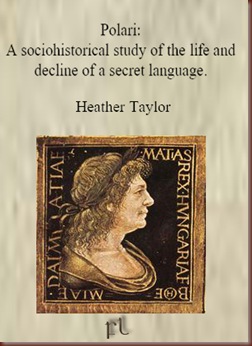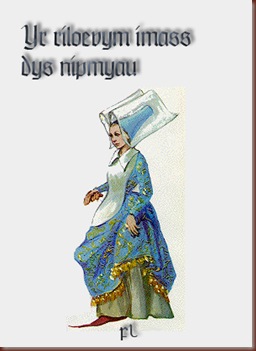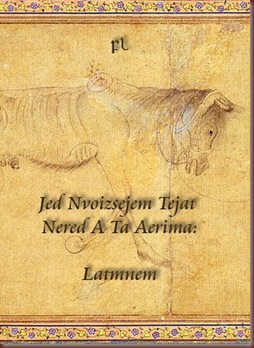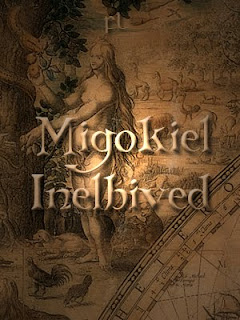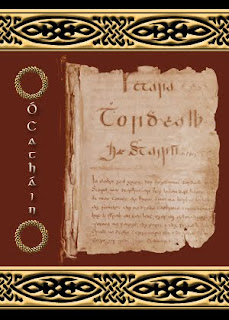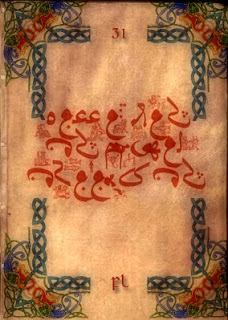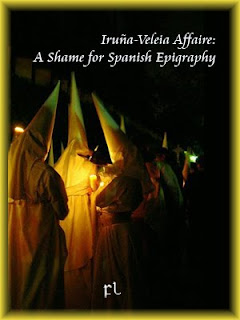
Download PDF here:
http://pdfcast.org/download/iru-a-veleia-shame-for-spanish-epigraphy.pdfIruña-Veleia Affaire: A Shame for Spanish Epigraphy
The lessons Spain did not learn from Glozel
Everything around the artefacts unearthed at Glozel, France, in the mid-1920s, turned the site into the "Dreyfus affair" of French archaeology. Similarly, the artefacts unearthed at Iruña-Veleia, Spain, have become the Spanish Dreyfus equivalent.
Despite the fact that the archaeological establishment has been seeking to resolve the issue by legal sanction, intimidation and surreptitious means, increasing scientific evidence is putting to shame that very pompous and self-righteous establishment.
In order to understand the Iruña-Veleia affaire, one must recall the so-called Glozel affair, for both run in parallel and only minor changes are perceived. Glozel was termed the "Dreyfus affair" of French archaeology, and the Dreyfus equivalent was Emile Fradin, a seventeen-year-old, who together with his grandfather Claude Fradin stepped into history on 1 March 1924, when the Fradins uncovered a cave containing human bones and ceramic fragments.
At Iruña-Veleia (Alava, Spain), during the 2005 and 2006 field campaigns a team of archaeologists, headed by Eliseo Gil, uncovered a series of finds which included pottery sherds and other artifacts, dating to around the third century A.D., with some remarkable graffiti scratched into them. Like at Glozel, this could have been perceived as simply a normal archaeological discovery, comprising around 400 pieces of pottery, bone, brick, and glass carved with graffiti, were it not because the language portrayed in some of the graffiti was ancient Basque. Note that prior to 2005, excavations of the site had already yielded around several hundred graffiti; therefore it was more than natural to find more such artifacts at the site.
While at Glozel the discovery was a matter of luck, and the discoverers were a farmer and his son, at Iruña-Veleia the discoverer was Eliseo Gil's team, a reputed archaeologist supported by experts in ancient history, epigraphy, and linguistics. At the Iruña-Veleia site the archaeological work was a well-planned and well-executed exercise.
In this story it is the figure of Joaquín Gorrochategui, a local professor of Indo-European linguistics at the Basque University, who plays the role of Breuil. He examines just a handful of pieces and concludes they were fakes, referring particularly to the graffiti written in ancient Basque, though he admitted that the data available about the Basque language of the third century AD is scant, not to say almost non-existent. Thus, early on a local professor of Indo-European linguistics declares the finds to be fakes, basing his conclusions on the scanty linguistic evidence available from the period and the hypothetical reconstructions of the Basque language developed by his university colleague Joseba Lakarra. And that happened just ten days after Gil's first press conference on the artifacts.
Obviously, the local professor was in a hurry of some sort.
In an interview given to Archaeology Magazine, the local professor Gorrochategui stated that in the end, what explains everything is that they are fakes. This is clearly a bad explanation for discoveries that do not fit the accepted scholarly paradigm, be it in the field of linguistics or whatever other field. Note the use of the word everything, which already gives us a clue about how the local professor perceives the world from within his tiny field of expertise.
In May 2007, the head of the Department of Euskera, Culture and Sports of the Provincial Government of Alava, Lorena López de Lacalle, a person with no academic curricula of any sort and who curiously enough does not even speak Basque, convened a panel of experts to investigate the finds. As in the best tradition of the Spanish Inquisition, the panel was called
La Comisión. The commission was appointed to conduct further investigation into the matter, something which sounds reasonable. However, the members were appointed from among those who had already decided the Iruña-Veleia finds were fraudulent. Contrary to what one should have expected, the so-called Comisión was composed almost exclusively of local professors, all of whom belonged to the same university as Lakarra and Gorrochategui, and some of whom had already showed aversion and antipathy against Gil. It was an ad hoc panel made up of those professors who had already expressed doubts about the finds to the press.
The only member of Gil's team attending the commission’s meetings was Gil himself. This is what we call a commission à la Glozel.
The commission of local experts held its first meeting in January 2008 and, as expected, its conclusions were mostly dismissive of Gil's reports and findings as these challenged their carefully established and vociferously defended dogma on several levels. This group of clearly biased professors were all advocates, pleading for Lakarra and Gorrochategui's cause by using of every technique at their disposal. The most striking evidence they could muster as proof of a fake inscription was the impossible reading of DESCARTES in a piece which simply shows MISCAR, where even the M is in doubt. This already demonstrates the little respect the Commission would show for facts. In light of this distorted and highly biased rendition of the facts, any reader of the final report must concur with its findings. This is largely because the lack of a detailed treatment of key aspects of the dispute gives the reader no option but to reach this same conclusion, while the selection and presentation of details has ensured that that opinion reached will match the Commission's own. However, in the end, after a careful reading of the Commission's final report, the reader is left with the impression that its contents along with the opinions expressed in it are clearly disproportionate, highly biased, and show a bunch of professors with a considerable lack of skills in the matters being investigated.
One member of the Commission,
Juan Manuel Madariaga, a professor of Analytical Chemistry at the Universidad del País Vasco, claimed that the artefacts had to be fakes since fragments from one of the tablets were found to be glued together. The use of glue by the archaeologists to restore broken pieces is not only a common practice, but also one that was fully documented in Gil's site reports, where identification of the only piece that was glued for restoration purposes can be found. However, the inquisitorial commission ignored this fact and promoted the idea that the pieces were unearthed already glued. Note that this argument about the glue continues to be used by several critics who stubbornly and quite falsely continue to insist that it is a true proof of forgery.
Another member of the commission,
Joseba Lakarra, who claims to be a philologist and a trained expert in Basque philology, even depicted the psychological profile of the character of the forger, stating that the forger, or forgers, stating that they were obviously aware of the contents of a book written by him only months before the discovery of the artifacts, as some of the graffiti could only be explained, again according to public declarations by Lakarra, by the fact that the forger or forgers had read his book before carrying out their handiwork. This is clearly the statement of a mentally retarded man who is temporarily enhanced to a genius-level intellect and who, as a druid, can visualize past events.
Unfortunately for the local Basque academic circles, Gil is getting increased support as more and more researchers, both inside and outside the Basque country, have had the opportunity to study high resolution photographs of the fascinating findings, researchers such as
Juan Martin Elexpuru, doctor in Basque Philology,
Héctor Iglesias, a reputed Basque philologist who was affiliated with the French IKER research institute (
Centre de Recherche sur la Langue et les Textes Basques),
Luís Silgo Gauche, doctor in Archaeology specializing in epigraphy,
Antonio Rodriguez Colmenero, doctor in Archaeology and Epigraphy from the University of Santiago de Compostela, and
Roslyn M. Frank, professor Emeritus in the Department of Spanish and Portuguese at the University of Iowa, specializing in Basque Studies.
All in all, these experts, working in isolation, have either confirmed the authenticity of the finds or clearly refuted the weak conclusions of Joaquin Gorrochategui, Joseba Lakarra and the associated group of local professors. It is the work of these skilled researchers that keeps us foreign scholars free from being totally misinformed about the remarkable graffiti. It is also a totally abnormal behaviour that Lorena López de Lacalle has not allowed access to the artefacts for examination was not allowed to anyone, except to members of the inquisitorial panel; equally baffling it's the fact that even before Gil could submit his allegations, López de Lacalle signed the order of suspension of the excavation license, which actually meant the confiscation of Eliseo Gil's team properties, reports, photographs, dossiers, equipment, and, obviously, their inability to access the pieces.
Additionally, the position taken by this narrow circle of Basque academics in support of the theory that the pieces are forgeries, has been echoed and vociferously promoted over the internet by a most curious mish-mash of parvenu, newcomers, amateurs, and deranged individuals, none of whom have any academic background in the relevant fields of research. One of them is
Salvador Cuesta Cobo, defined by
Archaeology Magazine as a history buff who runs a hate-filled, anti-semitic Catholic online community dedicated to lending support to the forgery theory and who works at the water analysis laboratory belonging to Basque Government. Another active member of this rag-tag community (a mere gang of 5 people) is
Juan Carlos Vidal Moreno, an individual devoted to the trade of mushrooms, kelp, and black fungus and who patented an electromagnetic clepsydra!!
Cuesta Cobo, who is nothing more than a low-level administrative clerk, considers himself a consecrated Egyptologist (sic) at the Egyptology forum, while Vidal Moreno once published a pamphlet on the Ligurian and Occitan languages which is considered by expert linguists as pure rubbish. Fortunately, Juan Carlos Vidal Moreno has never been able to get a single article of his published in a philology journal.
It is also a deep shame that Archaeology Magazine interviewed Cuesta Cobo, instead of interviewing Juan M. Elexpuru, Hector Iglesias, Luis Silgo, Rodriguez Colmenero, or Roslyn M. Frank.
Though expelled from the site, and without access to the artefacts that he and his team unearthed, Eliseo Gil has worked hard and diligently, keeping in touch with experts in the fields of archaeology, epigraphy, early Christian iconology, history and linguistics, an attitude that was clearly disturbing to the authorities, and that has made Gil powerful enemies. Finally, López de Lacalle charged him in the courts for fraud and attacks on national heritage, an outcome much alike the Glozel affaire.
On every occasion, local media has aligned itself with the local authorities, disseminating the message that "
everything is false", that is, promoting Joseba Lakarra and Joaquin Gorrochategui's particular “theory of everything”: totum revolutum. Here the main role was played by the so-called journalist
María José Carrero, working for the local newspaper
El Correo, and an individual who has no university training, indeed, never even attended a university.
The conclusions of the commission were presented as a set of short low quality reports. In reading the reports one quickly notices strong contradictions among the members. First, not all of the reports were duly stamped or signed; second, the dates in some reports were simply impossible, either because they showed a date later than the deadline established for turning them in, or because they were simply undated. Third, some reports strike the reader for the extremely weak argumentation and total absence of scientific rigor (most of them refer to photographs of the artefacts without the author of the report actually having examined the pieces themselves!). Last, but not least, all the members of the commission were instructed to produce a report that would qualify the finds as fraudulent, that is, the commission was not set up to investigate whether the pieces were or were not forgeries, but rather, it was set up to support the preconceived idea that they were fakes!
A now typical behaviour in Spanish epigraphy is the one displayed by
Alicia Canto y de Gregorio, allegedly a professor of epigraphy and classical archaeology at the Universidad Autónoma de Madrid. She has been an outspoken critic, an internet forum activist and from the very beginning of the Iruña-Veleia affaire she considered the finds forgeries, while she reached this conclusion by looking at just two computer scanned photographs taken from
El Correo.
Nonetheless, most internet freakies and fervent critics echoed her supposedly informed opinion. Alicia Canto y de Gregorio believes she represents a pillar of epigraphy, although, quite fortunately, she is the only one believing thus. It is obviously a shame that Alicia Canto y de Gregorio is better known for her appearances in one of those ridiculous programs devoted to UFO mysteries, paranormal activity, and poltergeist-like phenomena aired at the Spanish TV, playing the role of an inquisitorial judge, than by her scant academic contributions to the field of epigraphy. And it is really sad that she goes on to teach a generation of Spanish epigraphists at the Universidad Autónoma in Madrid. Obviously, she makes sure to tell all of them that the Iruña-Veleia artefacts are fakes, even when she never ever had the opportunity to directly examine a single one of them.
Remarkably, when challenged with evidence that thermoluminescence, scanning surface microscopy, and carbon dating can easily show that the Iruña-Veleia artefacts cannot be forgeries created by Eliseo Gil's team, López de Lacalle declared that the scientific debate is now closed. It is also laughable and even somewhat ridiculous, indeed, something that arouses thoughtful amusement, the fact that Lorena López de Lacalle ordered a graphological analysis of some pieces, while at the same time neglecting the validity of a serious thermoluminescence analysis.
One should note that these expensive graphological analyses are being paid for by the Spanish taxpayer.
Therefore, although
all the archaeological evidence suggests the discoveries at the site are genuine, we find a narrow-minded local professor of Indo-European refuting their validity, for example, on the grounds of a biased and nonexistent reading of one of the graffiti, an individual supported by a coterie of ignorant deranged lunatics who call themselves consecrated Egiptologists, inventors of the electromagnetic clepsydra, or, why not? epigraphers. Add to that the role of an inept and incompetent journalist, the endemic schizophrenic political environment in Basque country, and you'll have everything you need to understand the Iruña-Veleia affaire.
Political motivation also plays a role here. Alicia Canto y de Gregorio was an activist of the CDS party (
Centro Democrático y Social);
Martín Almagro-Gorbea, founder-director of the magazine Complutum of Universidad Complutense de Madrid, is known for his anti-Basque, conservative, and misogynic positions (see
this for more details). The right-winger political position of Martin Almagro Gorbea is clearly depicted in his paper
El pasado en el futuro de España, available
here, in which he advocates for a concept of Spain devoid of nationalisms. The above mentioned article appeared in Cuenta y Razón, a magazine published by Fundación de Estudios Sociológicos, known for its right-wing tendencies (the president of such organization, Rafael Ansón, is the brother of Luís María Ansón, president of the Editorial Board of Grupo Intereconomía). Martín Almagro Gorbea is also an anti-abortion activist, according to www.derechoavivir.org, a right-wing Catholic anti-abortion Spanish organization (his signature appears in
this document).
In essence, if Eliseo Gil is correct, the Vitoria school of philology is wrong, and Lakarra’s life's work—his reconstructions of proto-euskera—would be discredited. Obviously, Gorrochategui's credibility would also be seriously damaged by his stupid reading of DESCARTES. He would do well to attempt a serious analysis of the pieces and publish it in a scholarly journal, summarizing his findings and his arguments, provided the rest of the above mentioned linguists, archaeologists and epigraphers can also have access, on an equal basis, to both the pieces and the ability to publish in the same scholarly journals. Something that, at this date and intellectual climate, we are afraid, is not possible. In fact, Joseba Lakarra and Joaquin Gorrochategui seem to want to make sure that this will never happen, and thus they go about telling everyone who will listen that Gil is a forger. Meanwhile they are known to contribute anonymously to online internet forums in order to further discredit Gil's team.
A more stupid attitude is the one taken by Alicia Canto y de Gregorio, namely: if finds similar to those at Iruña-Veleia are ever unearthed anywhere else, then they, too, have to be fraudulent. Canto y de Gregorio, when exposed to the unromantic, pitiless light of reality, prefers to appear on TV programs, talking about fakes, ghosts, and aliens rather than publishing in serious academic journals whatever scientific objections she may have against the remarkable finds. It is clear that elements which refuse to fit into the inter-connected self-invented whole that these professors have mentally created and promoted, and which cannot easily be made to square with their interpolated explanations, are liable to be sloughed and forgotten, were it not because of the fact that there are other epigraphers out there ready to do real epigraphical research.
Canto y de Gregorio is just a story-teller, using internet forums to tell stories disqualifying the work of other researchers who dare not to cite her low quality papers in their own work. As a story-teller, she is unconsciously influenced by the tastes of her audience, and accommodates her tale to their knowledge, habits, and predilections. We already know a bit about Canto y de Gregorio's audience: Juan Carlos Vidal Moreno (a mushrooms and kelp trader), Salvador Cuesta Cobo (a low-level administrative clerk who considers himself a consecrated Egyptologist), and all those professors with a backwards mentality. In this sympathetic relationship between the story-teller and her readers, a relationship consisting of a kind of mutual admiration society, the demand for what is amusing, denigrating, and maliciously false tempts the story-teller to take liberties with her material in order to make it more attractive, and the fictitious world of the author soon creeps in, relegating reality to the background by altering accepted facts.
Let's leave the story-teller alone with her day-dreams.
In the meantime, an organisation named S.O.S.-Veleia, made up of people that feel uncomfortable with how the local archaeological world is handling Iruña-Veleia, calls for the reexamination of the pieces by a new group of neutral scholars, including international experts, and they have even set up an online database showing hi-res images of all the finds. Of course, López de Lacalle fiercely opposes the idea of any scientific reexamination of the artefacts: why bother with facts when there are pet theories and reputations to be defended? Remember, many of the star players have a great deal of local prestige to lose if the authenticity of the artefacts were to be proven.
Finally, one might be tempted to conclude that the main problem with the collection of Iruña-Veleia is that, to date, something similar hasn’t been found in northern Spain. We, however, prefer to conclude that the main problem is quite a different one: the lack of a healthy disrespect for the pomp and ignorance of local academia in Spain.
Notes
Gil's team excavation reports, along with the Commission's reports, are all available at the official S.O.S.-Veleia site: http://www.sos-irunaveleia.org/informes






